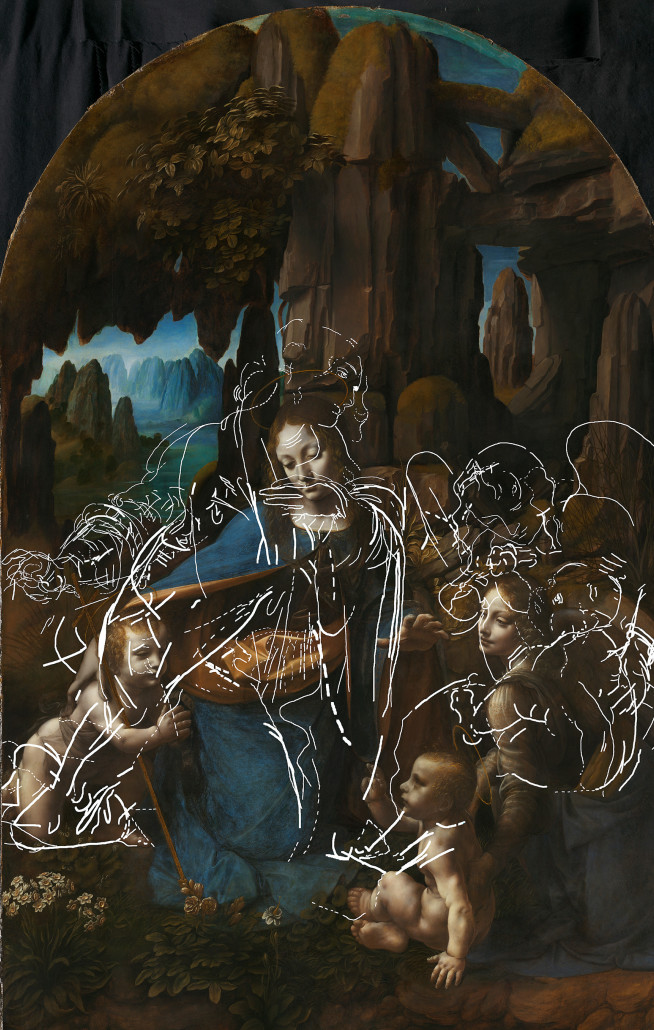Research / Professor Pier Luigi Dragotti
Beneath Da Vinci’s The Virgin of the Rocks
Words: Peter Taylor-Whiffen / Photo: The National Gallery, London
Context

Art lovers have always been fascinated by the creative process behind a masterpiece, including the practice of painting on top of previously used canvases. While X-ray imaging has been around for half a century, it’s only recently that non-destructive, non-invasive techniques have been able to break down the layers of an artwork into its individual chemical elements.
However, art historians have had to analyse this data manually – no automated, precise, analytical tool has been able to measure and read each element of each pigment of each layer. Until now.
Background
The National Gallery’s imaging and manual analysis techniques had revealed that Leonardo da Vinci’s The Virgin of the Rocks was not his first attempt at the work and that there were sketches beneath it.
So, its principal scientific officer, Dr Catherine Higgitt, turned to Professor Pier Luigi Dragotti, who created an algorithm for the automatic extraction of the sketches.
According to Dragotti: “This algorithm takes all the specific data from the chemical elements of the painting to visualise hidden drawings, to reveal these much clearer than ever before.”
Methodology
The new algorithm was combined with macro X-ray fluorescence (MA-XRF) screening, a non-invasive scanning process that maps chemical elements within paintings. While MA-XRF is widely used, previous analysis relied on manual selections of various elements and expert user-interpretation.
The Finite Rate of Innovation theory algorithm developed by Dragotti and his team separates all elements in all layers automatically to an unprecedented level of precision. “We analysed each pixel individually to break each pigment down to a minute degree,” says Dragotti, “and then put them all together to make up a truer map of all the chemical elements in the painting.”
Findings
The new algorithm revealed hidden drawings beneath the surface of The Virgin of the Rocks. As well as showing in clearer detail a sketch of the Virgin Mary higher up the canvas, it also showed an ‘abandoned’ sketch of a winged angel and an infant Christ.
“It was a magical moment, to finally reveal that image,” says Dragotti. “And, as an Italian, revealing something from a work Da Vinci created 500 years ago was extraordinary.”
Outcomes
“By revealing Da Vinci’s creative process, we can enhance the experience of looking at and understanding how great works of art came into being,” says Dragotti.
“We see earlier versions, finished sketches and abandoned sketches. But this can also help art curators and historians contextualise the work, understanding which artists used which materials when and in which regions – and how these might reveal relationships between artists – which is of enormous benefit to the understanding of art.
“We’ve always known canvas was scarce and artists often created new works over existing paintings, but this helps us reveal those layers.
“We are looking to apply this to other masterpieces – we’re currently looking at works by Titian – but we are also working to develop AI, where the algorithm keeps learning to become more and more detailed.
“And this may not be restricted to paintings but may give us insights into how other objects were created too.”
Pier Luigi Dragotti is Professor of Signal Processing in the Department of Electrical and Electronic Engineering.


